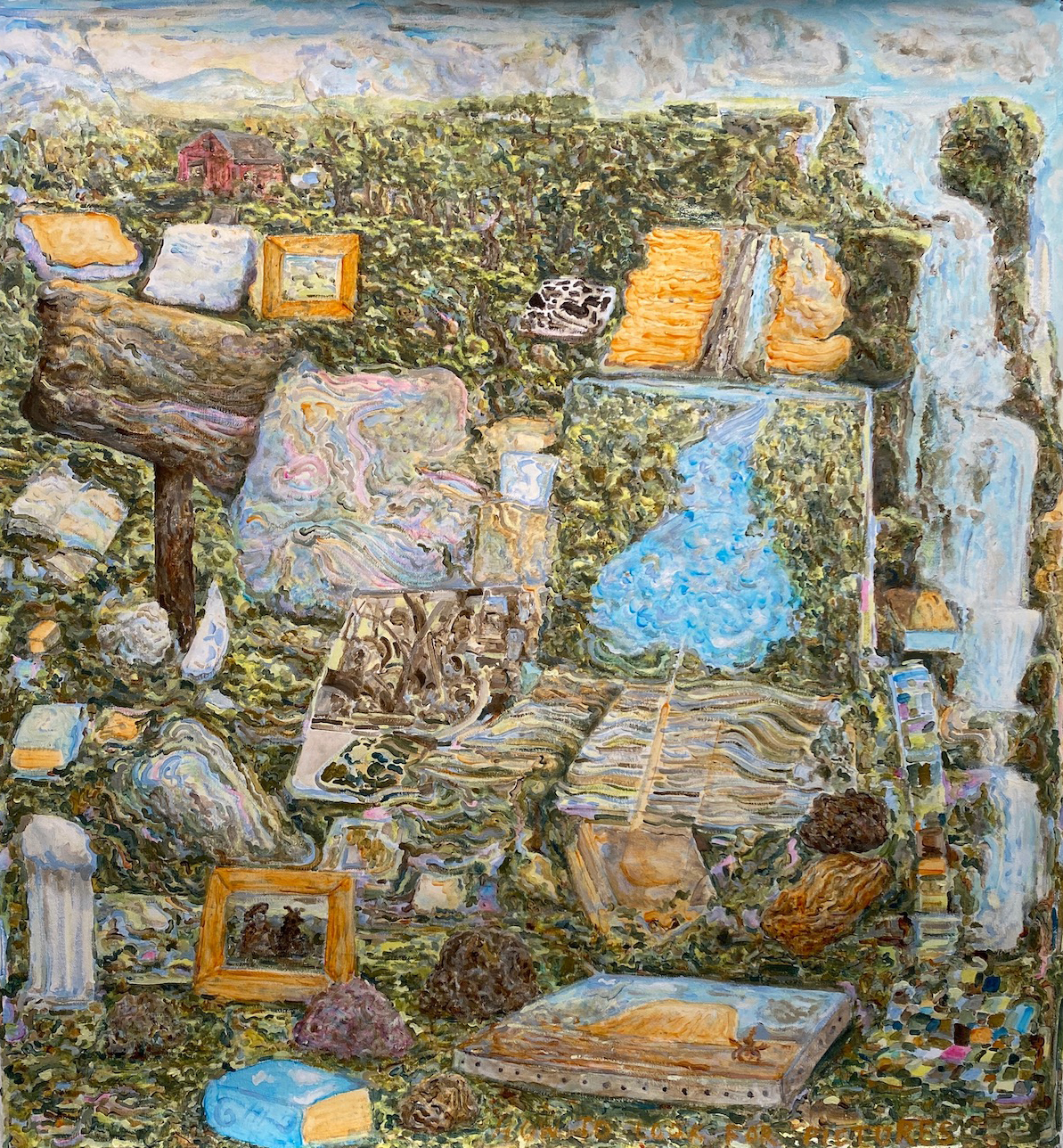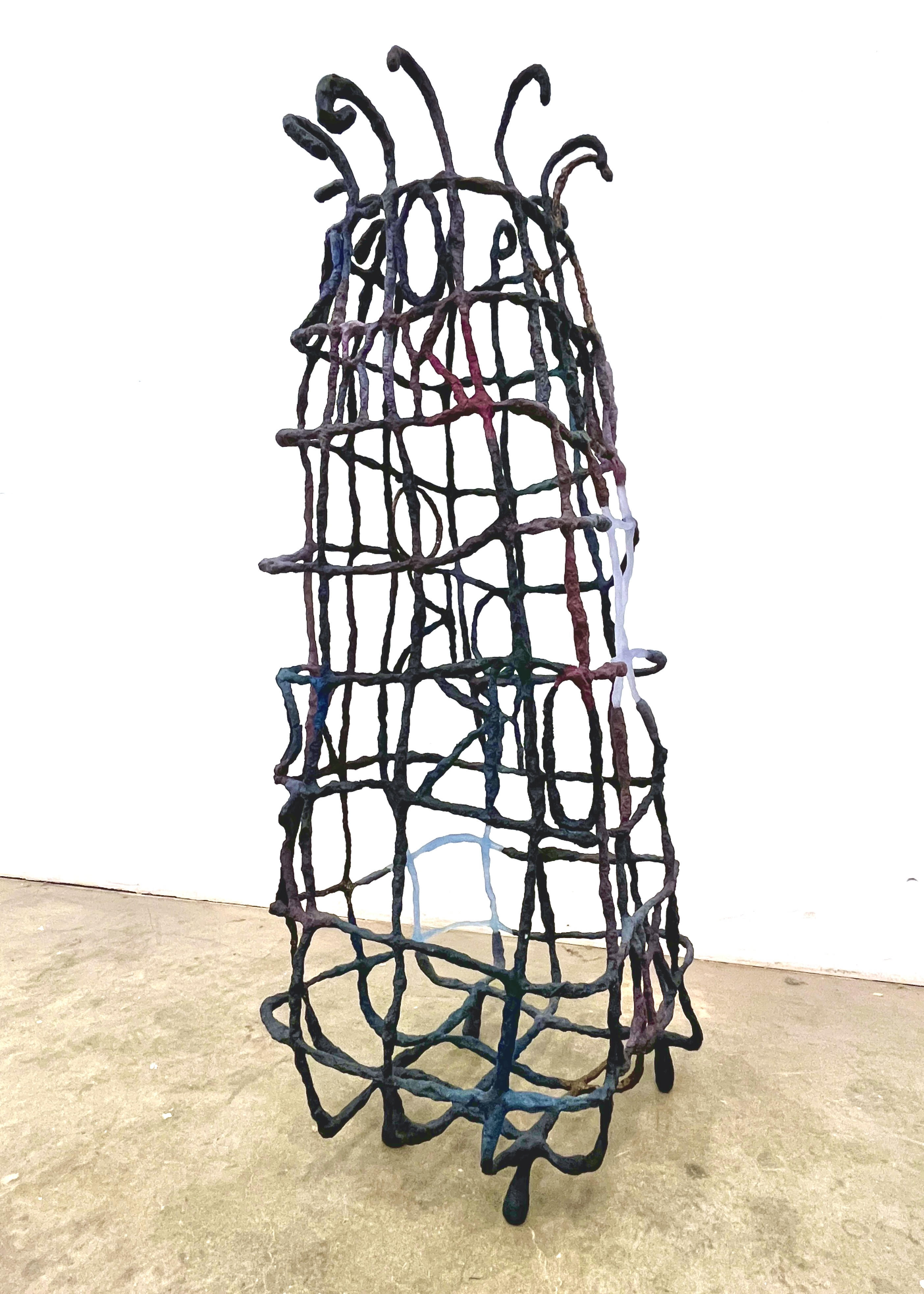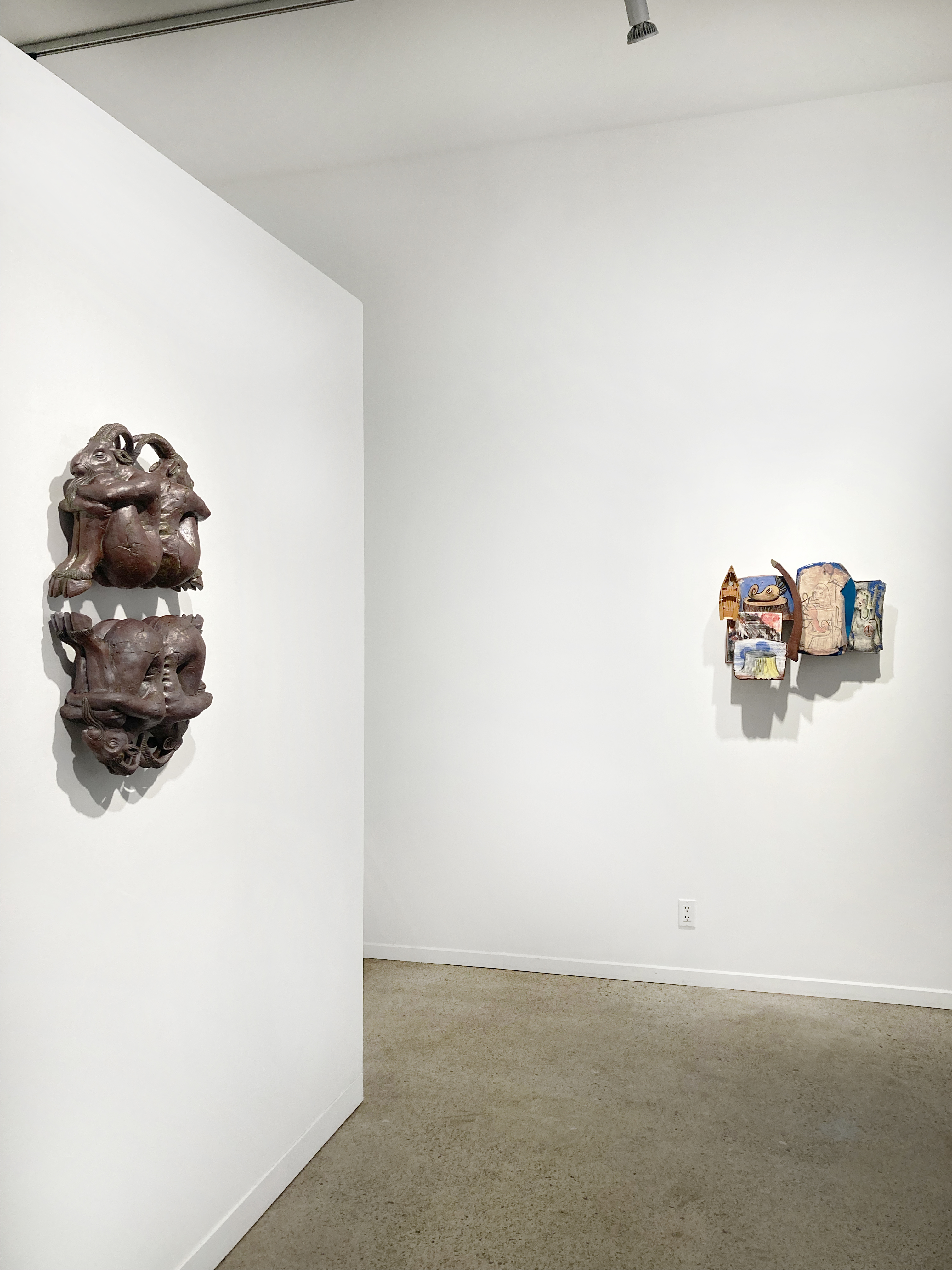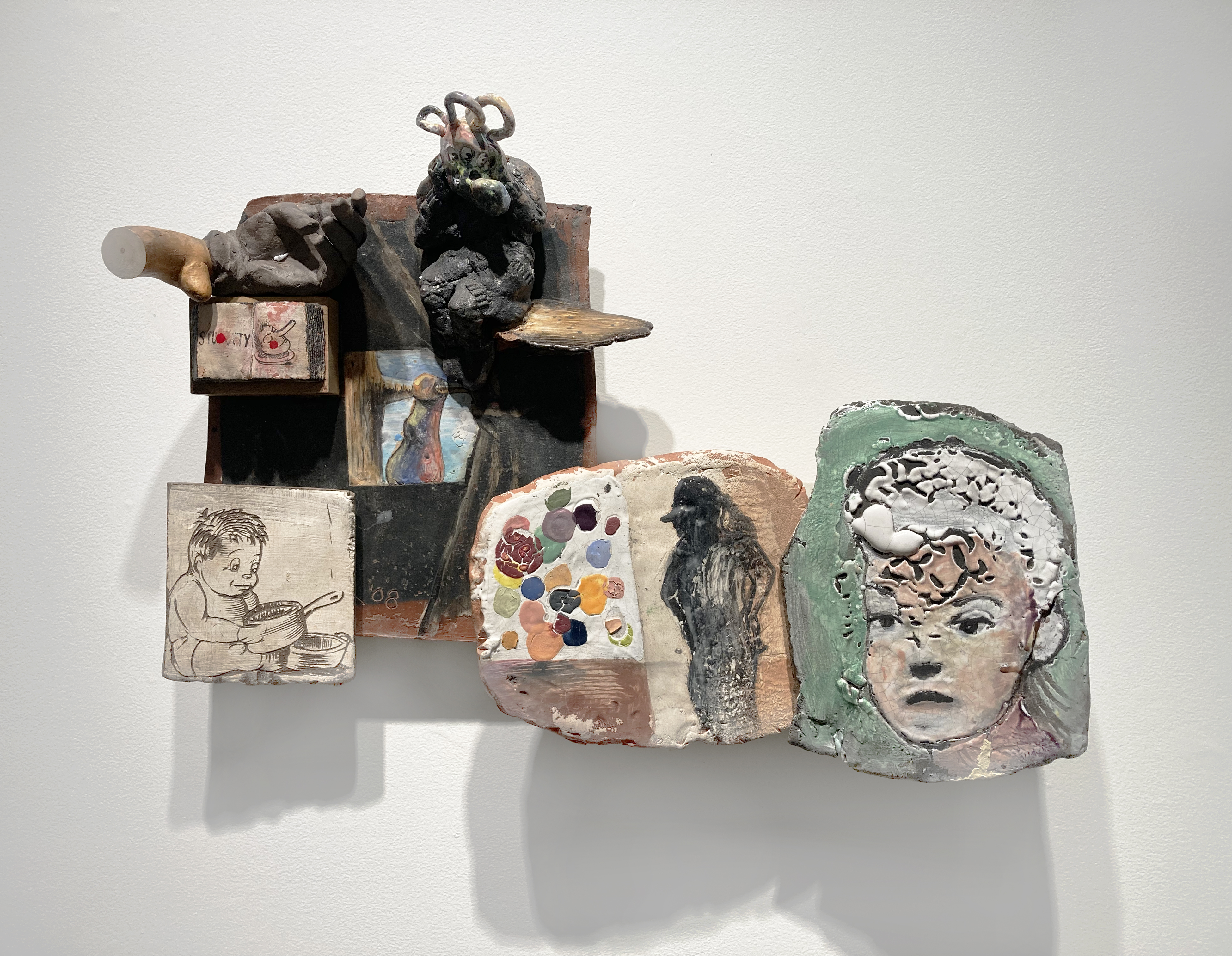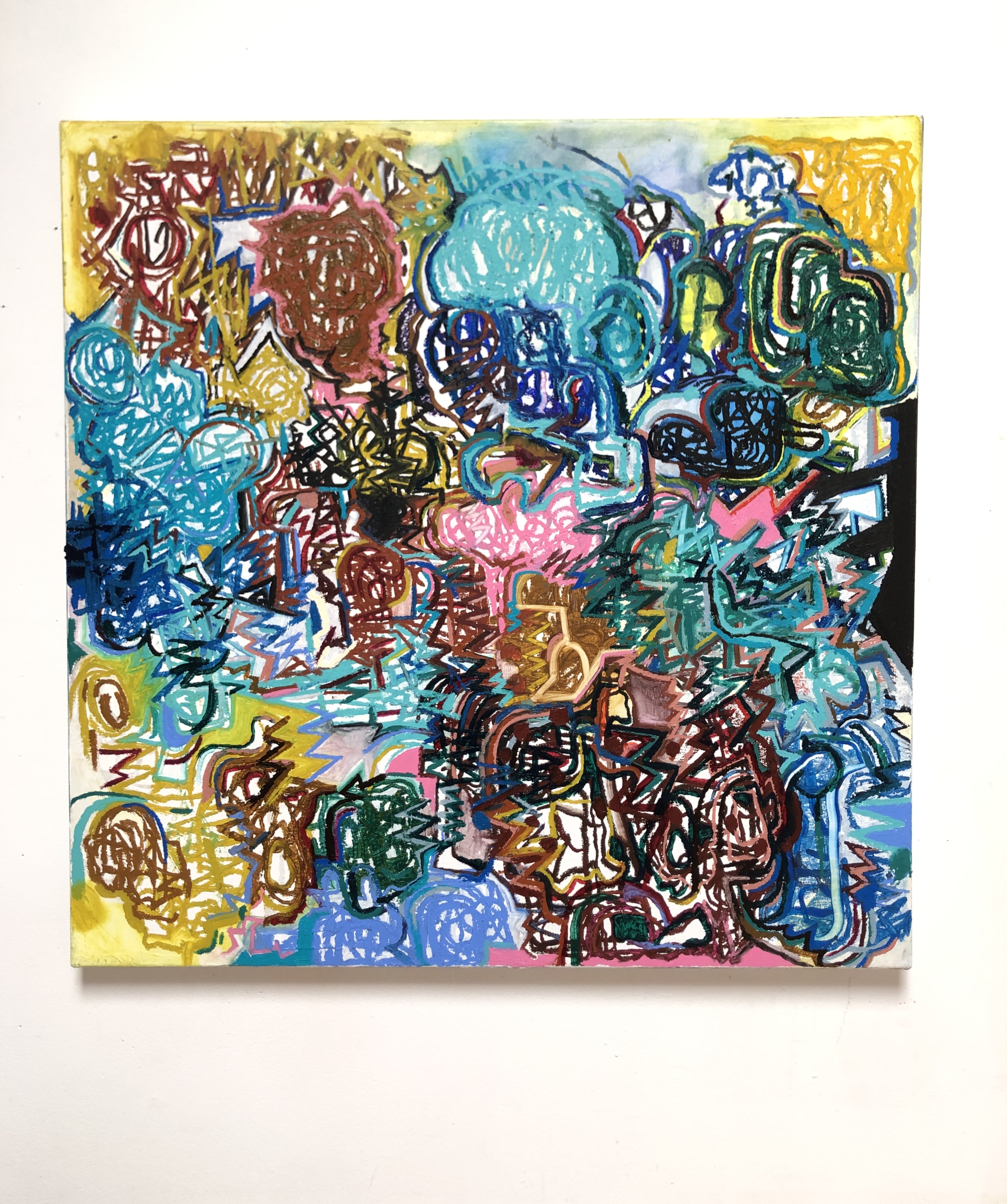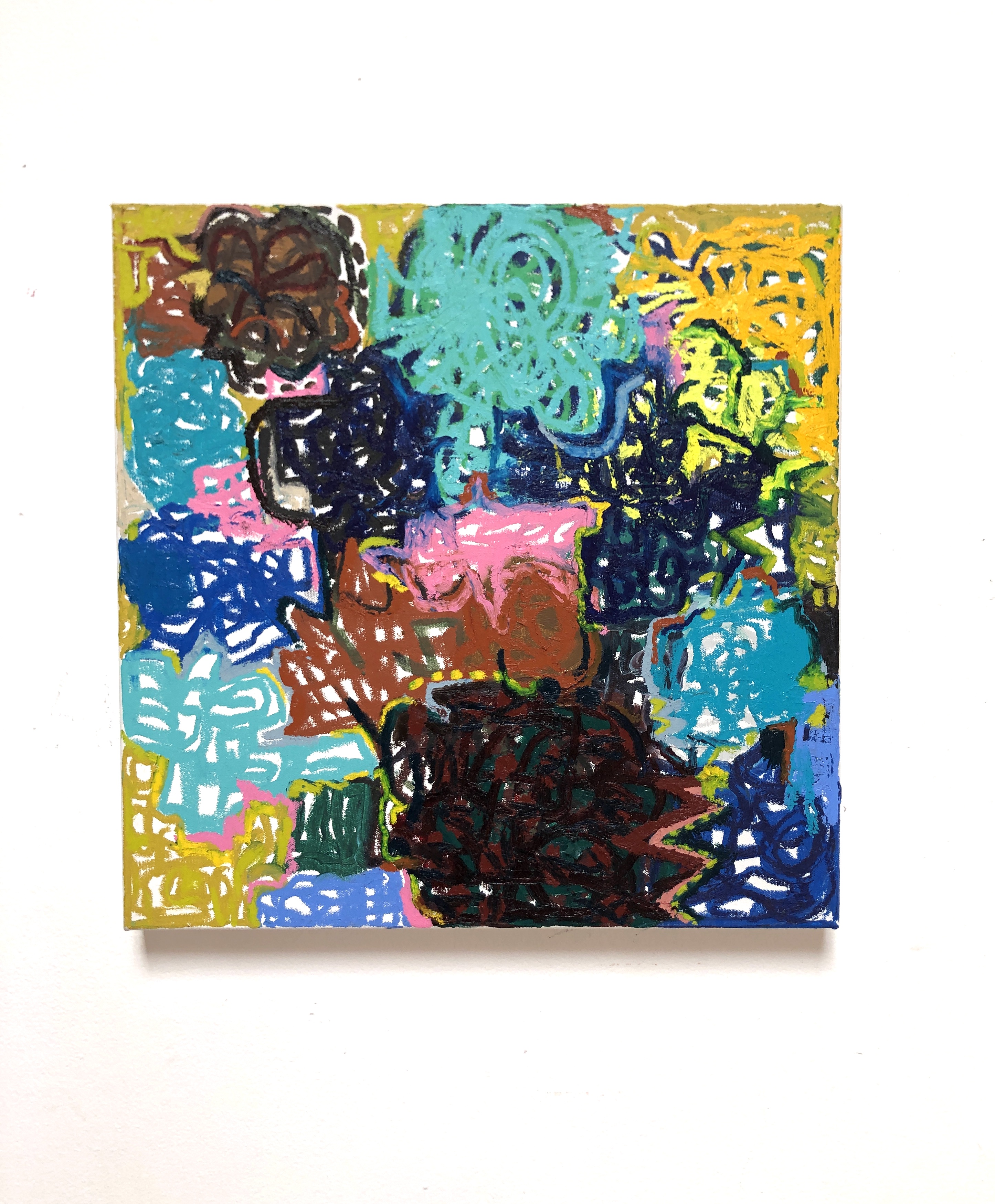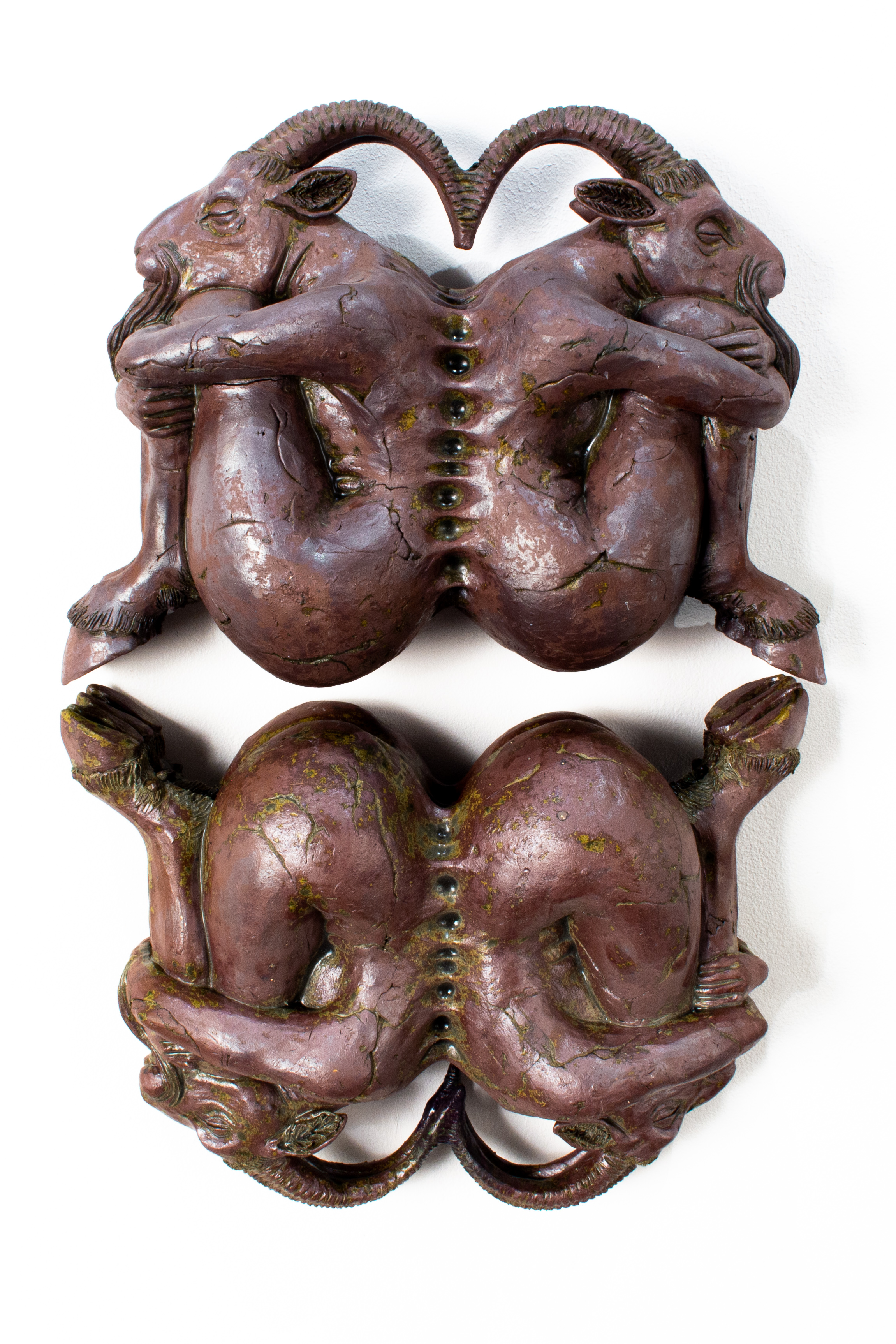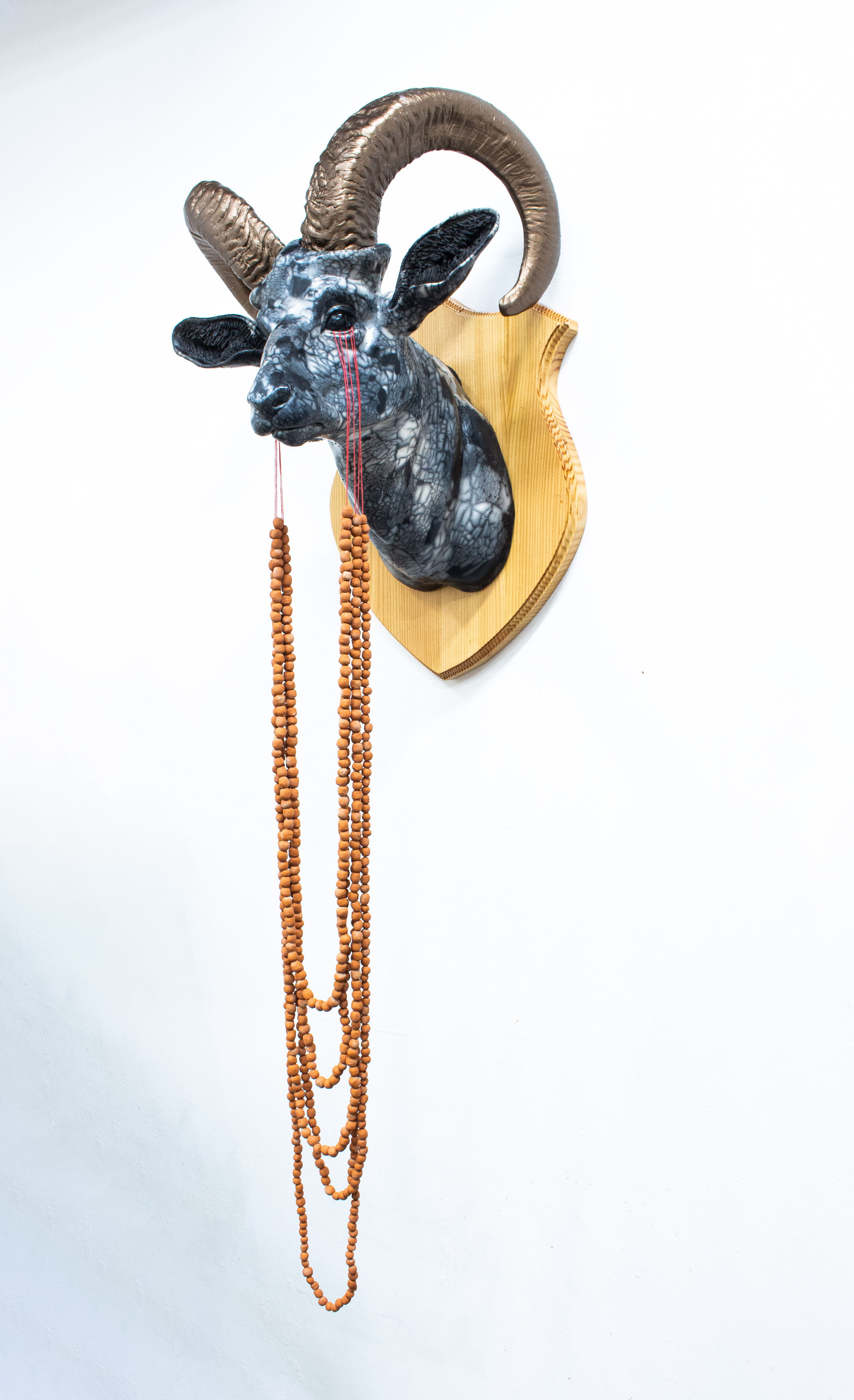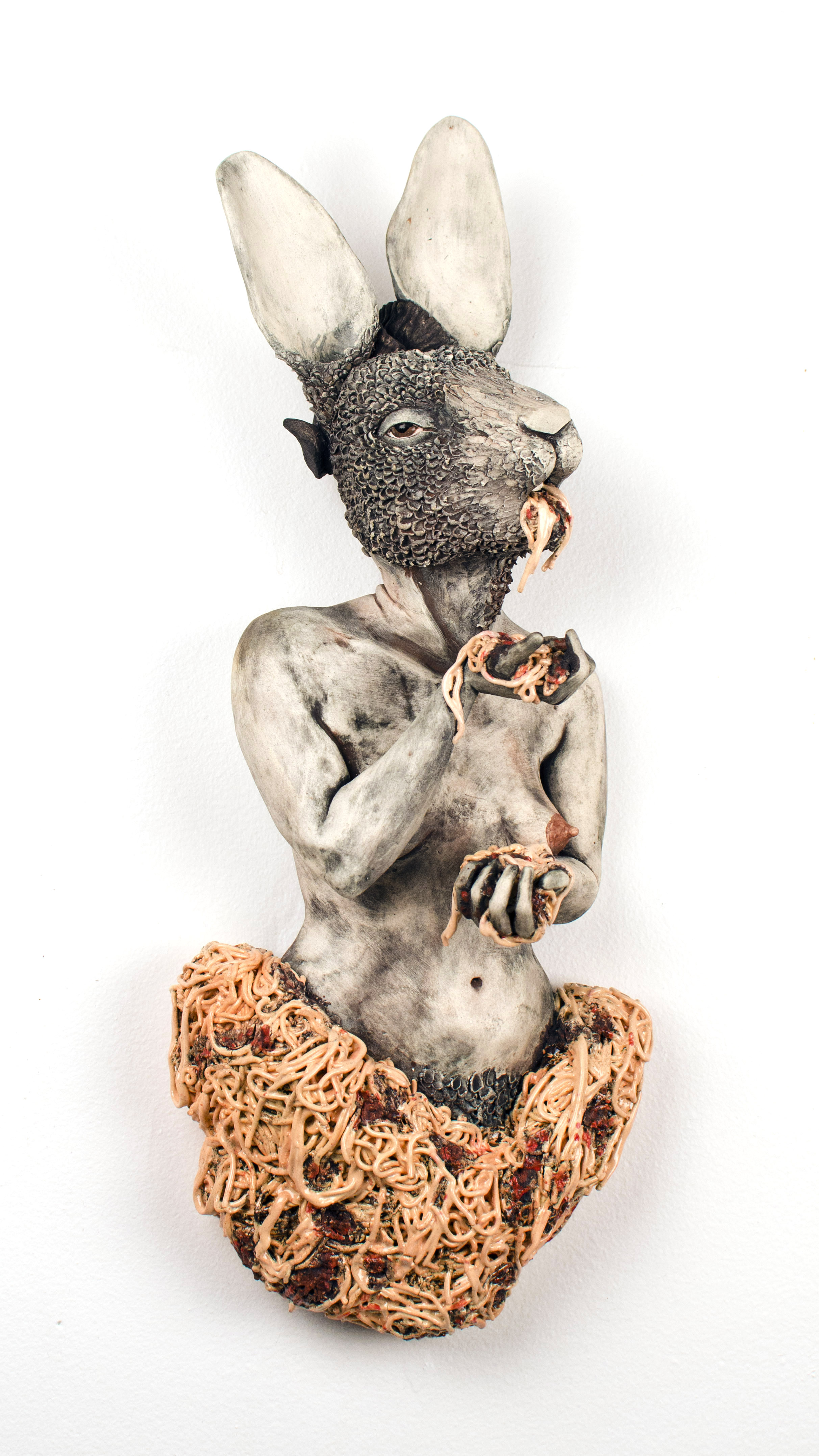Heroes Gallery is pleased to present works by Arthur Gonzalez, David E. Kearns, Nick Lowe, Hallie McNeill and Jai Sallay-Carrington in conversation with works by Robert Arneson; a celebrated leader of the Funk movement of the 1960s and 70s. As the second exhibition of Heroes' curatorial residency at Seattle's studio e gallery, this show explores how Funk's bold aesthetic, dark humor and often grotesque absurdity pushes back at an established art world today just as it did back then.
A California Bay Area native, Arneson reacted to New York's chilled, conceptual Abstract Expressionism with deeply personal portraits. Quirky, ornate and figuratively larger-than-life, his works countered the clean lines and fields of color of the time by addressing messy, conflicting emotions - finding ways for his portraits to be simultaneously aggressive and affectionate, offensive and endearing, self-referential and completely universal. Flying in the face of the 1960s highbrow culture, his figuration celebrated sensuous flesh and the betrayal of our bodies through aging by meticulously documenting his battle with liver cancer right up until his untimely death in 1992.
Arthur Gonzalez is directly influenced by Funk's legacy as a former student and teaching assistant of Arneson's at UC Davis's MFA ceramics program. Gonzalez is an elaborate storyteller, blending an alchemy of personal symbols and popular cultural narratives such as Pinocchio, John the Baptist and old Samurai movies into a tangled mythology. He both reveres and rebels against the rules of Baroque and Academic painting, reshuffling established art history into a medium with less restrictions. “In ceramics there are no such rules, only freedom,” states Gonzalez, mirroring painting's great compositions in sculptural form.
Jai Sallay-Carrington also pushes against the cultural establishment of classical portraiture. Through queer and trans-non-binary gender identity, Sallay-Carrington explores human identities, behavior and emotions using anthropomorphic creatures and hybrid bodies. Each animal comes with its own unique qualities, as well as the myths and stories associated with them, which become totemic of each portrait sitter. By blending humor and sensuality, Sallay-Carrington builds new, richer, nonbinary cultural identities.
Nick Lowe's compact, oil stick marks vibrate like cacophonous music. The word "funky" comes to mind, jazz music's term that the Funk Movement's name originated from, as each restless line is contained and organized into tight bubbles. Lowe is originally from the Bay Area and cites the Funk movement, along with underground comix and cartoon-style graffiti bubble letters, as strong influences on his work. Each rebellious and rule-breaking philosophy bleeding into and over the more orthodox language of abstract painting.
David E. Kearns paintings are created by observing nature during long walks near his home in Western Massachusetts. Daily sketchbook drawings help him record and layer memories of trees, stumps, outdoor gear and painting supplies into chaotically organized systems that, like Lowe's paintings, have a restless line and squirming texture. The accumulation of memory layers multiple walks into one visual field, producing a tightly packed painting with no horizon line or destination. Organized like a comic book, these paintings describe a time, a place and an experience all at once.
Hallie McNeill's sculptures similarly investigate alternative systems of organizing. Interested in the poetics and shortcomings of language, McNeill often references a tragicomic figure; trying but failing to be moral, kind, insightful and thoughtful. The grid appears often in McNeill's work as a nod to the grid in art history (Sol Lewitt) and technology (digital 3D modeling techniques). She questions how space is built, used and given meaning, and how we each bring order to the world, however haphazardly and inaccurately.
